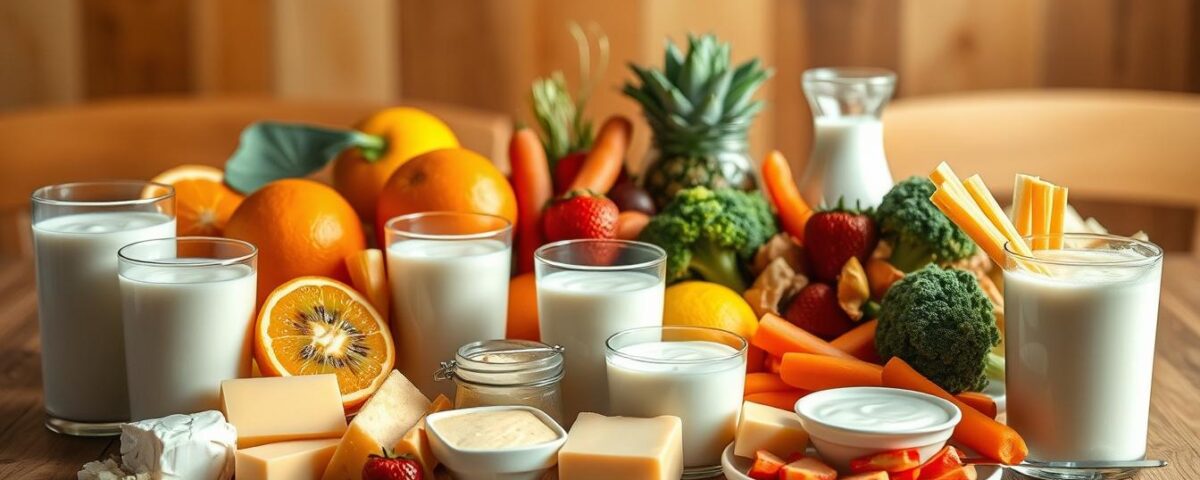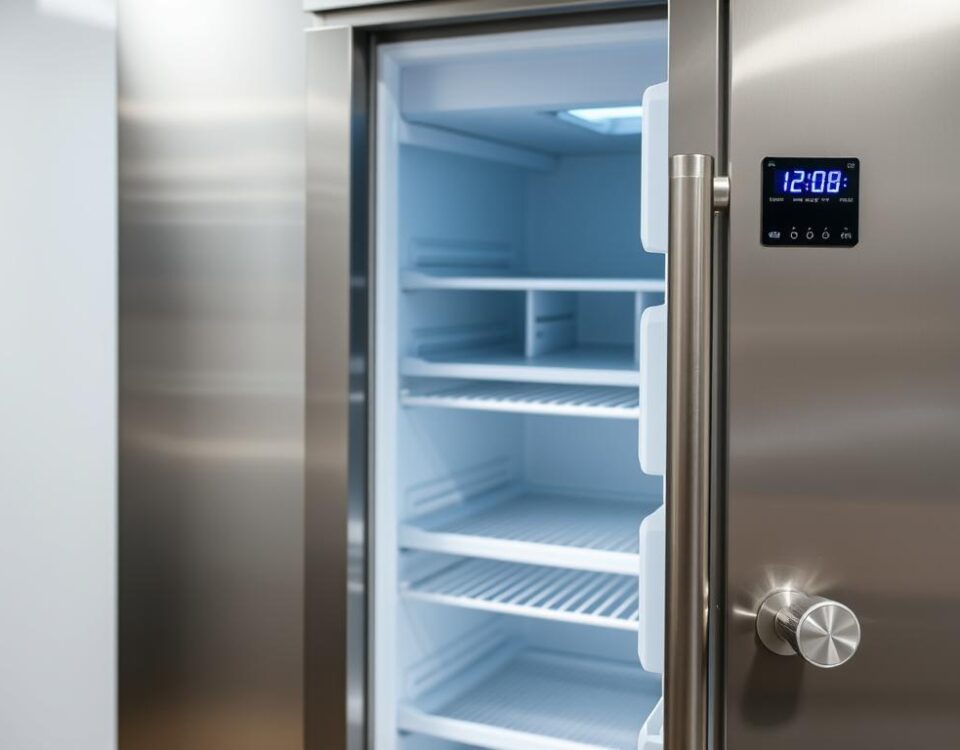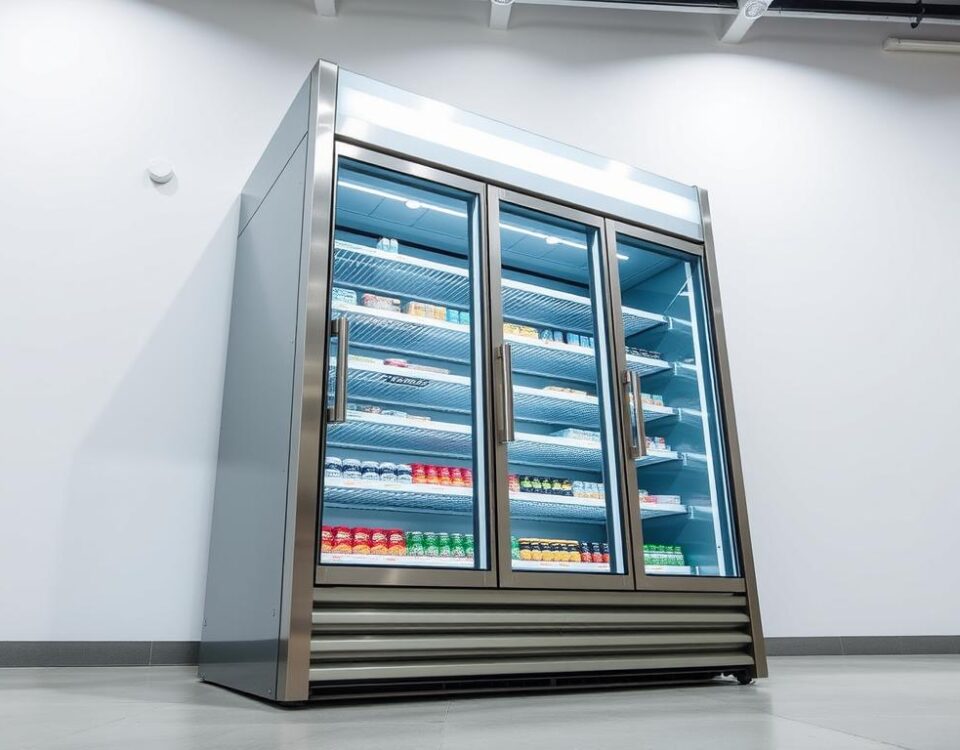
How Vitamin D Helps Your Child Grow Taller: A Complete Guide
June 16, 2025
Superfoods Proven to Enhance Your Child’s Memory and Focus
June 17, 2025When my daughter slipped off the monkey bars last summer, I held my breath waiting for the X-ray results. The doctor said she’d fractured her wrist—but what surprised me wasn’t the injury. It was his offhand comment: “Kids’ bones are still building reserves, so nutrition matters now more than ever.” That moment sent me down a rabbit hole of research on how everyday meals shape lifelong skeletal health.
Did you know nearly 15% of children aged 9–13 don’t meet daily calcium needs, according to CDC data? As I dove into nutritional guidelines, I realized how crucial specific nutrients are during growth spurts. Calcium acts like mortar between bricks, while vitamin D unlocks its absorption—a partnership that determines whether little bodies construct sturdy frames or fragile ones.
Through trial and error (and many rejected broccoli florets), I discovered creative ways to pack these essentials into meals. This journey taught me that bone health isn’t just about drinking milk—it’s about pairing the right foods with active lifestyles. In the coming sections, I’ll share practical strategies I’ve gathered from pediatric nutritionists, including sneaky ingredient swaps and calcium-packed snacks even picky eaters love.
Key Takeaways
- Childhood bone development relies heavily on calcium and vitamin D intake
- Nutritional gaps during growth years can impact long-term skeletal strength
- Creative meal planning helps overcome picky eating habits
- Physical activity complements dietary efforts for optimal bone density
- Many calcium sources exist beyond traditional dairy products
Essential Nutrients for Bone Health
Building a sturdy skeletal framework starts with three key players: calcium, vitamin D, and protein. These nutrients work like construction crews—laying down minerals, reinforcing structures, and repairing micro-damage from playtime tumbles. Without them, growing bodies can’t build the dense bone matrix needed to support lifelong activity.
Calcium and Vitamin D: The Foundations
Calcium acts as the literal building block of bones, with 99% of the body’s calcium stores residing in our skeleton. But here’s the catch: vitamin D holds the key to unlocking calcium absorption. The Osteoporosis Nutrition Guidelines reveal kids need 700–1,300 mg of calcium daily, depending on age. Yet 40% of American children fall short on vitamin D, according to recent research.
I learned through trial and error that timing matters. Our bodies absorb calcium best when spread across meals—like adding cheese to breakfast eggs or yogurt as an afternoon snack. Pairing these with 10–15 minutes of sunlight (nature’s vitamin D factory) helps maximize benefits.
Protein’s Role in Bone Growth
While calcium gets most attention, protein builds the collagen scaffolding that gives bones flexibility. Studies show children with higher protein intake develop 5–10% greater bone density by adolescence. Think of it as rebar in concrete—without it, structures become brittle.
My pediatrician shared a striking finding: Teens who meet protein goals have 12% lower fracture risks. Now I aim for 19–34 grams daily through smart swaps—blending Greek yogurt into smoothies or adding chickpeas to pasta sauces. This approach doesn’t just help kids—research suggests consistent protein intake reduces osteoporosis risks as people age.
Strong Bones Foods: Dairy, Legumes, and Fortified Products
After realizing my kids needed more calcium than they were getting, I discovered a world beyond basic milk glasses. The Bone Health Alliance recommends 3 daily servings of calcium-rich foods for children—but what counts as a serving? Here’s how I learned to mix traditional staples with creative alternatives.
Classic Calcium Champions
Dairy products deliver calcium in its most bioavailable form. One cup of milk provides 300 mg—about 30% of a child’s daily need. I started using shredded cheese in omelets and mixing yogurt into pancake batter. My favorite hack? Freezing Greek yogurt tubes for lunchbox treats.
| Food | Serving Size | Calcium (mg) |
|---|---|---|
| Whole milk | 1 cup | 276 |
| Cheddar cheese | 1.5 oz | 307 |
| Fortified almond milk | 1 cup | 451 |
| White beans | ½ cup cooked | 96 |
Beyond the Dairy Aisle
For families avoiding dairy, fortified products become essential. I blend calcium-set tofu into smoothies and use almond milk in oatmeal. Chickpeas surprised me—mashing them into cookie dough adds 80 mg per ½ cup. Nutritionists caution that plant-based sources often require larger portions to match dairy’s calcium content.
My kids now eat calcium-fortified cereal with orange juice (another fortified favorite) for breakfast. Dinner might feature black bean tacos with a lime wedge—the vitamin C boosts absorption. It’s not perfect, but combining these products helps bridge nutritional gaps without daily milk mustaches.
The Benefits of Leafy Greens and Vegetables for Bone Density
I nearly gave up when my son declared war on anything green—until I learned how these veggies secretly boost skeletal strength. While dairy often steals the spotlight, dark leafy greens pack a nutritional punch that’s crucial for developing bone mineral density. Research from the Journal of Nutrition shows the antioxidants in vegetables like broccoli help protect bone cells from damage during growth spurts.
Powerhouse Plants for Growing Frames
Kale became our kitchen MVP after discovering one cup delivers 100 mg of calcium plus magnesium—a mineral that helps calcium integrate into bone matrix. Spinach offers similar benefits, though I quickly learned to pair it with citrus (hello, vitamin C) to boost iron absorption. A Harvard study found kids who regularly eat greens develop 6% higher bone density by adolescence compared to peers.
Here’s how we made peace with vegetables:
- Blend baby kale into berry smoothies—the purple hides the green
- Roast broccoli with Parmesan until crispy like chips
- Mix spinach into quesadillas using fun-shaped tortillas
These tweaks helped my kids get vital nutrients without the dinner-table standoffs. Bonus: The fiber in greens supports gut health, proving that bone health strategies often benefit the whole body.
Fish and Other Protein-Packed Foods for Growing Bones
Did you know a 3-ounce salmon fillet delivers more vitamin D than a glass of milk? This discovery changed how I approach family meals. While dairy often dominates bone health conversations, seafood offers unique benefits that support growing frames.
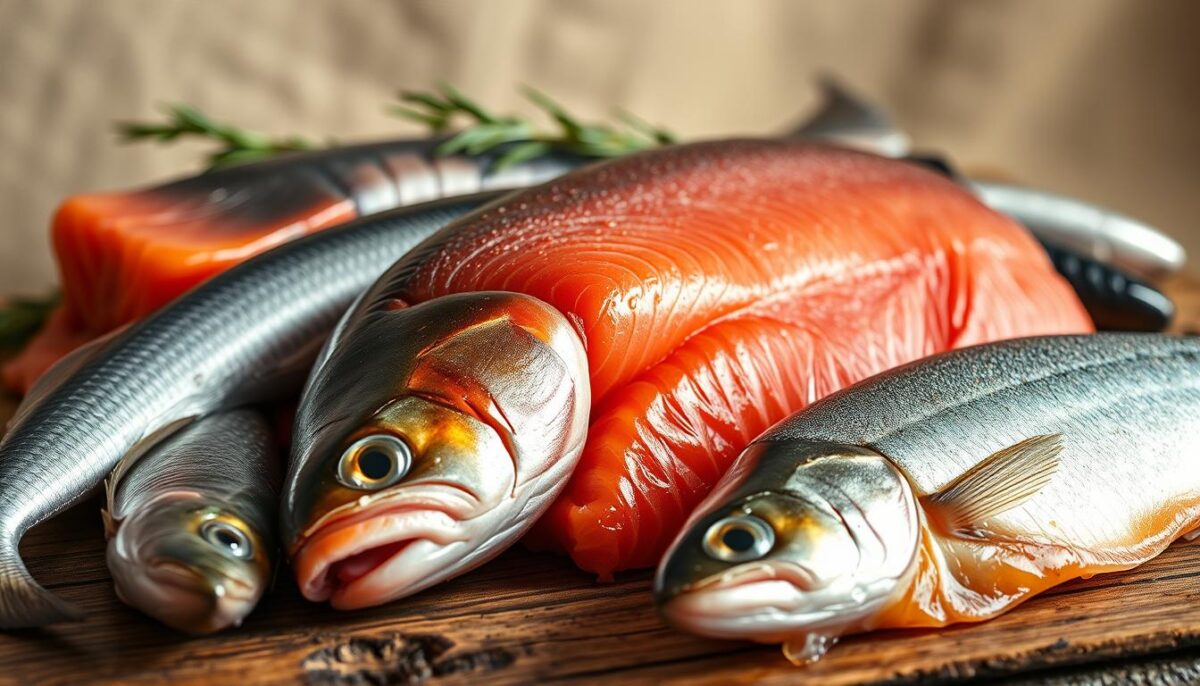
Fatty Fish for Vitamin D and Bone Strength
Salmon became our kitchen staple after learning it provides 447 IU of vitamin D per serving—nearly 75% of a child’s daily need. The Osteoporosis Nutrition Guidelines highlight how this nutrient acts like a delivery truck driver, transporting calcium to where bones need it most. Studies show kids who eat fatty fish twice weekly have 18% lower fracture risk during growth spurts.
Here’s what works for my picky eaters:
- Mix canned mackerel into tuna salad sandwiches
- Bake salmon burgers with sweet potato buns
- Serve sardines on whole-grain crackers with cream cheese
When selecting fresh fish, I prioritize wild-caught options for higher omega-3 content. But don’t stop at seafood—eggs and fortified mushrooms also boost vitamin D intake. Pair these with calcium-rich sides like steamed kale for maximum bone health impact.
Recent research reveals teens consuming adequate protein from varied sources develop 7% denser bones by adulthood. I now rotate grilled chicken skewers, lentil soups, and quinoa bowls into our weekly menu. This balanced approach helps prevent nutritional gaps that could lead to bone loss later in life.
Understanding Calcium Absorption in Kids
I used to think a big glass of milk at dinner covered my kids’ calcium needs—until I learned how timing affects absorption. Our bodies can only process about 500 mg of calcium at once, according to pediatric nutrition guides. Piling on larger amounts? That’s like trying to pour a gallon into a pint-sized container.
Spreading Calcium Intake for Optimal Absorption
Here’s what surprised me: calcium gets absorbed best when split across meals. Think of it as snack-sized mineral deposits rather than one big haul. A Journal of Pediatrics study found kids absorb 30% more calcium from three 300 mg servings versus a single 900 mg dose.
| Meal Schedule | Calcium Amount per Serving | Absorption Rate |
|---|---|---|
| 3 spread-out meals | 300 mg | 30% |
| 1 large serving | 900 mg | 15% |
My family’s routine now includes:
- Cheese cubes with breakfast eggs
- Yogurt parfaits at snack time
- Steamed broccoli with dinner
Nutritionists suggest pairing calcium-rich foods with vitamin C sources. A squeeze of lemon on greens or strawberries with yogurt boosts uptake. I track my kids’ intake using a simple chart—aiming for 4-5 small calcium boosts per day.
Recent data shows spaced-out intake improves bone density by 8% in growing children. It’s not just about the amount calcium they get, but when and how their bodies absorb it. Little changes add up—like swapping afternoon chips for fortified cereal clusters.
Avoiding Foods That Hinder Bone Health
The day I found my preschooler hiding chicken nuggets in his socks, I realized some battles require strategy—especially when certain foods secretly sabotage skeletal development. While focusing on nutrient-rich choices matters, avoiding calcium blockers proves equally crucial for growing bodies.
Salty Saboteurs and Sneaky Snacks
Processed foods pack a double punch—high sodium content forces kidneys to flush calcium, while offering minimal nutritional value. Research from the National Institutes of Health shows every 2,300 mg of sodium consumed leaches about 40 mg of calcium from growing skeletons. That’s like losing a yogurt cup’s worth of minerals daily!
Our pantry purge revealed surprising culprits:
- Instant noodles (1,830 mg sodium per serving)
- Frozen pizza (640 mg per slice)
- Packaged crackers (300 mg per 10 pieces)
We now swap these for homemade roasted chickpeas or air-popped popcorn with nutritional yeast. Simple changes reduced our sodium intake by 35% in three weeks.
The Green Paradox: When Veggies Fight Nutrients
Spinach salads seemed like a win until I learned about oxalates—natural compounds that bind to calcium like molecular glue. A Journal of Nutrition study found the body absorbs only 5% of calcium from high-oxalate greens compared to 40% from low-oxalate options.
| High Oxalate | Low Oxalate |
|---|---|
| Spinach | Kale |
| Beet greens | Bok choy |
| Rhubarb | Broccoli |
We still enjoy spinach, but pair it with vitamin C-rich peppers to enhance iron absorption. For calcium needs, we focus on steamed collard greens or blend kale into fruit smoothies—tricks that maintain nutrient balance without taste protests.
Balancing a child’s diet isn’t about perfection. By reducing processed snacks and rotating greens, we’ve lowered loss risks while keeping meals enjoyable. Recent data shows these adjustments can improve mineral retention by 22% in active kids—proof that sometimes, what you remove matters as much as what you add.
Incorporating Bone-Supporting Vitamins and Minerals
During a routine checkup, our pediatrician flipped through my daughter’s food journal and asked, “Where’s the vitamin K?” That question unveiled a hidden layer of bone health—nutrients beyond calcium that act like construction managers, directing minerals where they’re needed most.
Spotlight on Vitamin K, Magnesium, and Zinc
Vitamin K activates proteins that bind calcium to bone matrix. A bone mineral density study found kids with higher vitamin K intake develop 10% denser skeletons by adolescence. Fermented foods like natto (soybeans) pack K2—the most bioactive form—but since most children won’t touch it, I sneak spinach into blueberry muffins.
Magnesium works behind the scenes, converting vitamin D into its active form. “Think of it as the spark plug in your car’s engine,” our nutritionist explained. We get ours from pumpkin seeds sprinkled on yogurt and magnesium-rich greens blended into pesto sauces.
| Mineral | Kid-Friendly Source | Daily Value % (Ages 4-8) |
|---|---|---|
| Zinc | 1 oz cashews | 15% |
| Magnesium | ½ cup edamame | 20% |
| Vitamin K | ½ cup steamed kale | 340% |
Zinc surprised me—this trace mineral supports bone-building cells called osteoblasts. Research shows zinc-deficient children have 23% higher fracture risks. We now include lean beef tacos and chickpea hummus in weekly meals.
For families struggling to get enough through diet, supplements can help. Look for chewables combining D3+K2, and always consult your pediatrician. Older adults might need higher doses, but for kids, focus on food-first approaches. As my nutritionist says, “Supplements patch gaps—they shouldn’t replace real meals.”
Balancing these minerals doesn’t require perfection. A handful of almonds here, a kale smoothie there—small additions create lasting impacts. Recent data shows proper vitamin K intake reduces heart disease risks later in life, proving bone health strategies benefit the whole body.
Practical Meal Planning Ideas for Kids
Mealtime battles used to leave my kitchen looking like a food warzone—until I discovered smart planning could turn picky eaters into nutrient ninjas. MyPlate guidelines recommend filling half their plates with fruits/veggies and pairing with calcium-rich dairy products. Here’s how we make it work without the meltdowns.
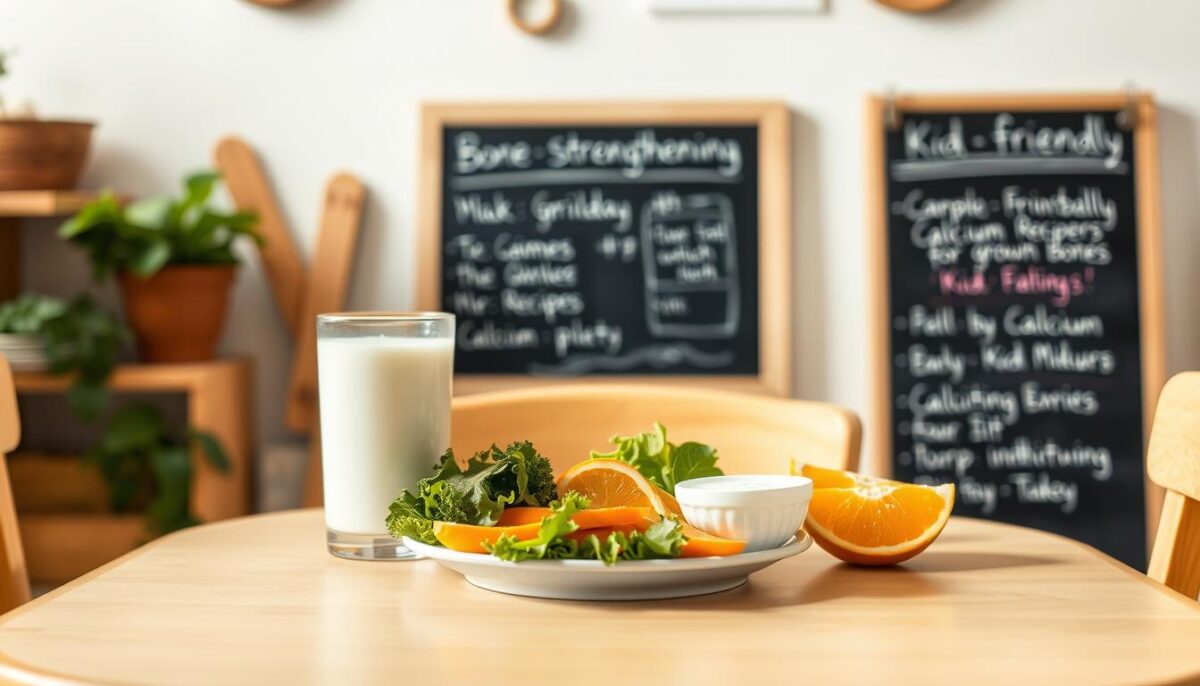
Breakfast and Snack Strategies
Mornings set the nutritional tone. We rotate these quick wins:
- Yogurt parfaits layered with fortified cereal and berries
- Whole-grain waffles topped with ricotta and sliced peaches
- Smoothies blending milk, spinach, and frozen mango
Snack time becomes calcium hour with cheese cubes and apple slices or kale chips baked with Parmesan. “Consistent exposure helps kids accept new textures,” notes our pediatric dietitian.
Lunch and Dinner Options
Lunchboxes get upgrades with:
- Quesadillas using calcium-fortified tortillas and melted cheddar
- Broccoli tots (shredded stems mixed with breadcrumbs and egg)
- White bean spread on whole-grain crackers
Dinners focus on variety—salmon patties one night, tofu stir-fry the next. Always include a dairy component like milk-based sauces or side salads with feta. Research shows kids need 4-5 calcium exposures per day for optimal absorption.
Pro tip: Let them build meals taco-style. When my daughter assembles her own sweet potato-black bean bowls, she naturally includes foods supporting bone health. It’s nutrition education disguised as play!
Lifestyle Tips to Enhance Bone Density in Growing Children
Watching my kids race through the sprinklers last summer, I noticed something transformative—their laughter wasn’t just building memories, but stronger skeletons. While nutrition lays the foundation, movement and body mechanics determine how well those building blocks stack up. “Physical activity creates tiny stresses that stimulate bone remodeling,” explains Dr. Linda Johnson, a pediatric orthopedic specialist. This revelation reshaped how we approach playtime.
Encouraging Active Play and Weight-Bearing Exercises
Jumping, climbing, and running aren’t just energy burners—they’re density boosters. Studies show children who engage in 60 minutes of daily activity develop 6% greater bone mass by adolescence. We’ve made it a family mission to:
- Turn sidewalks into hopscotch calcium highways
- Host weekend “Ninja Warrior” challenges using playground equipment
- Dance through commercial breaks (even the dog joins)
Strength training surprises many parents, but research confirms supervised resistance exercises increase bone density by 3% annually in kids. Our modified routine includes carrying grocery bags and crab-walking races.
Maintaining a Stable, Healthy Weight
Body weight acts as natural resistance during movement. Underweight children miss this stimulus, while excess weight strains developing joints. The risk of loss increases if growth plates become damaged. We focus on balanced meals and activity rather than scales—packing snacks like apple slices with almond butter keeps energy steady.
As kids age, these habits protect against osteoporosis. My neighbor, a 72-year-old women’s health nurse, credits childhood swim team for her fracture-free record. Whether it’s skateboarding or soccer, finding joy in movement creates lifelong health dividends.
Conclusion
Reflecting on our family’s journey, I realize small changes create lasting impacts. Those early struggles—rejected veggies and suspicious glances at fish—taught me that bone health thrives on consistency, not perfection. Remember, nearly 15% of kids miss their daily calcium targets according to CDC data, but creative solutions bridge gaps.
Spread nutrients throughout the day: a cheese stick at snack time, fortified cereal for breakfast. Pair these with sunlight play sessions to maximize vitamin D benefits. Research shows kids absorb 30% more calcium when intake spans multiple meals.
Don’t stress about every bite. Our best successes came through stealthy boosts—blending greens into smoothies or using almond flour in pancakes. Active lifestyles matter too: jumping games build density while making memories.
As you plan meals, focus on variety. Rotate dairy, legumes, and fatty fish to cover all mineral bases. Studies prove diverse diets reduce fracture risks by 12% in active children.
My kitchen experiments continue—last week’s black bean brownies were a hit! Keep tweaking recipes until you find what works. Your efforts today lay foundations for health that lasts decades. Every nutritious bite and playground leap writes a brighter future for their growing frames.
FAQ
What’s the most important nutrient combo for my child’s skeletal growth?
I always focus on pairing calcium and vitamin D. Calcium builds structure, while vitamin D helps their body absorb it. Think milk with sunlight playtime or yogurt with fortified cereal!
How can I add non-dairy calcium sources to meals?
Try white beans in soups, almond butter on toast, or fortified orange juice at breakfast. Even leafy greens like kale in smoothies work—they won’t taste it!
Are salty snacks really bad for their skeletal health?
Yes, but moderation is key. Excess sodium can flush out calcium. I swap chips with roasted chickpeas or celery sticks with hummus for crunch without the salt overload.
Which veggies give the biggest boost for growing bodies?
Collard greens, bok choy, and broccoli are my go-tos. Sauté them with garlic or blend into pasta sauces—kids rarely notice!
Can my picky eater get enough vitamin D without supplements?
Absolutely! Fatty fish like salmon (try fish tacos!) or egg yolks in omelets help. If they resist, a 15-minute park visit for sunlight does wonders too.
Do protein-rich foods actually support their frame?
Totally! Lean meats, lentils, or Greek yogurt provide amino acids that strengthen tissue. I mix grilled chicken into quesadillas or add lentils to spaghetti sauce.
What’s a simple way to improve calcium absorption daily?
Spread calcium intake. Instead of one glass of milk, offer cheese cubes at snack time, a yogurt parfait after school, and broccoli at dinner. Small doses add up!
Are weight-bearing exercises really necessary for kids?
Yes! Activities like jumping rope, dancing, or climbing playground equipment stimulate growth. I make it fun—obstacle courses in the yard work perfectly.
Should I worry about spinach blocking calcium uptake?
Only if they eat it in huge amounts. I balance high-oxalate greens (like spinach) with low-oxalate options like kale. Rotating veggies keeps nutrients diverse!
Any quick breakfast ideas that pack a mineral punch?
My top pick? Overnight oats with chia seeds, almond milk, and sliced figs. Or scrambled eggs with cheese and a glass of fortified OJ. Fast and mighty!
